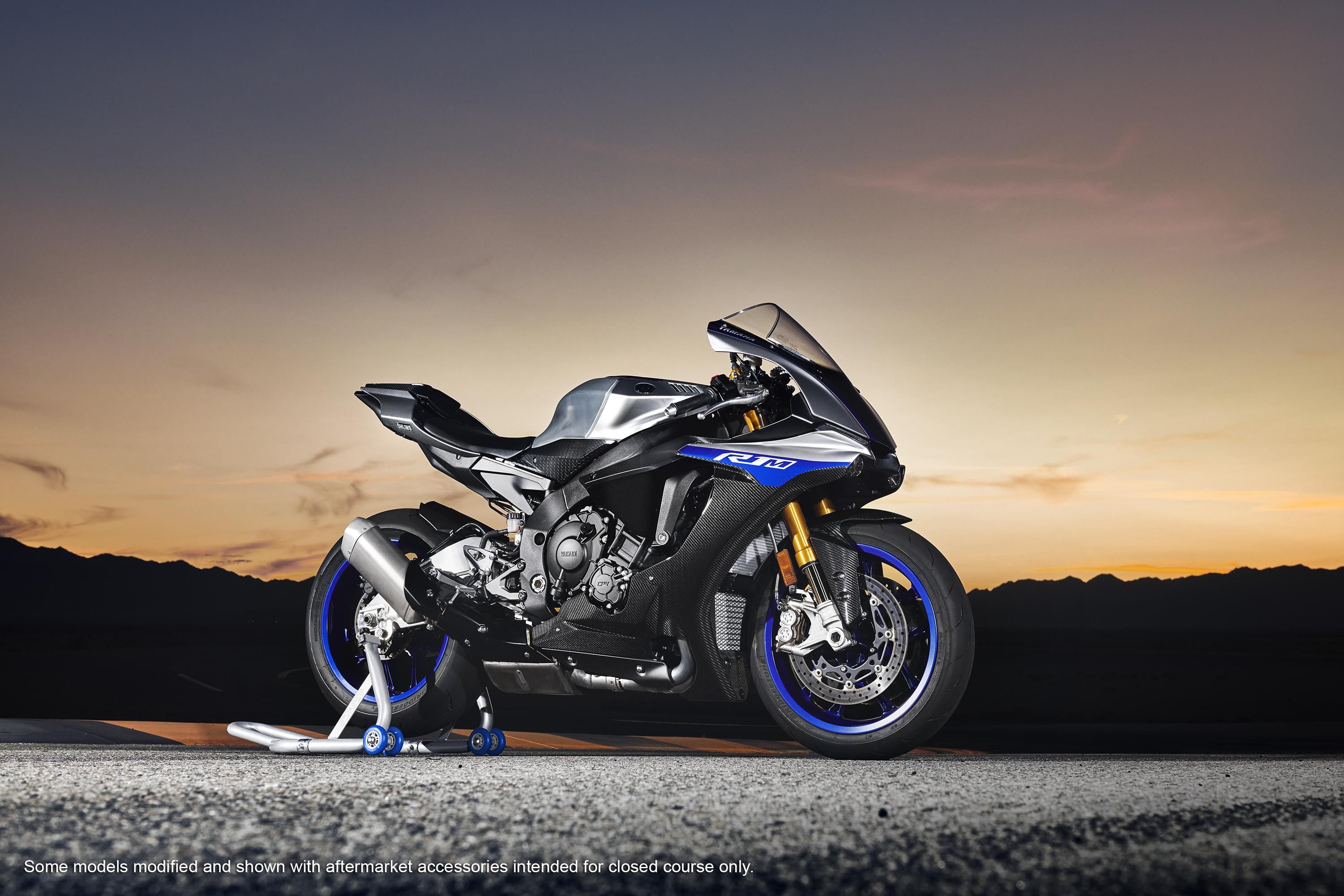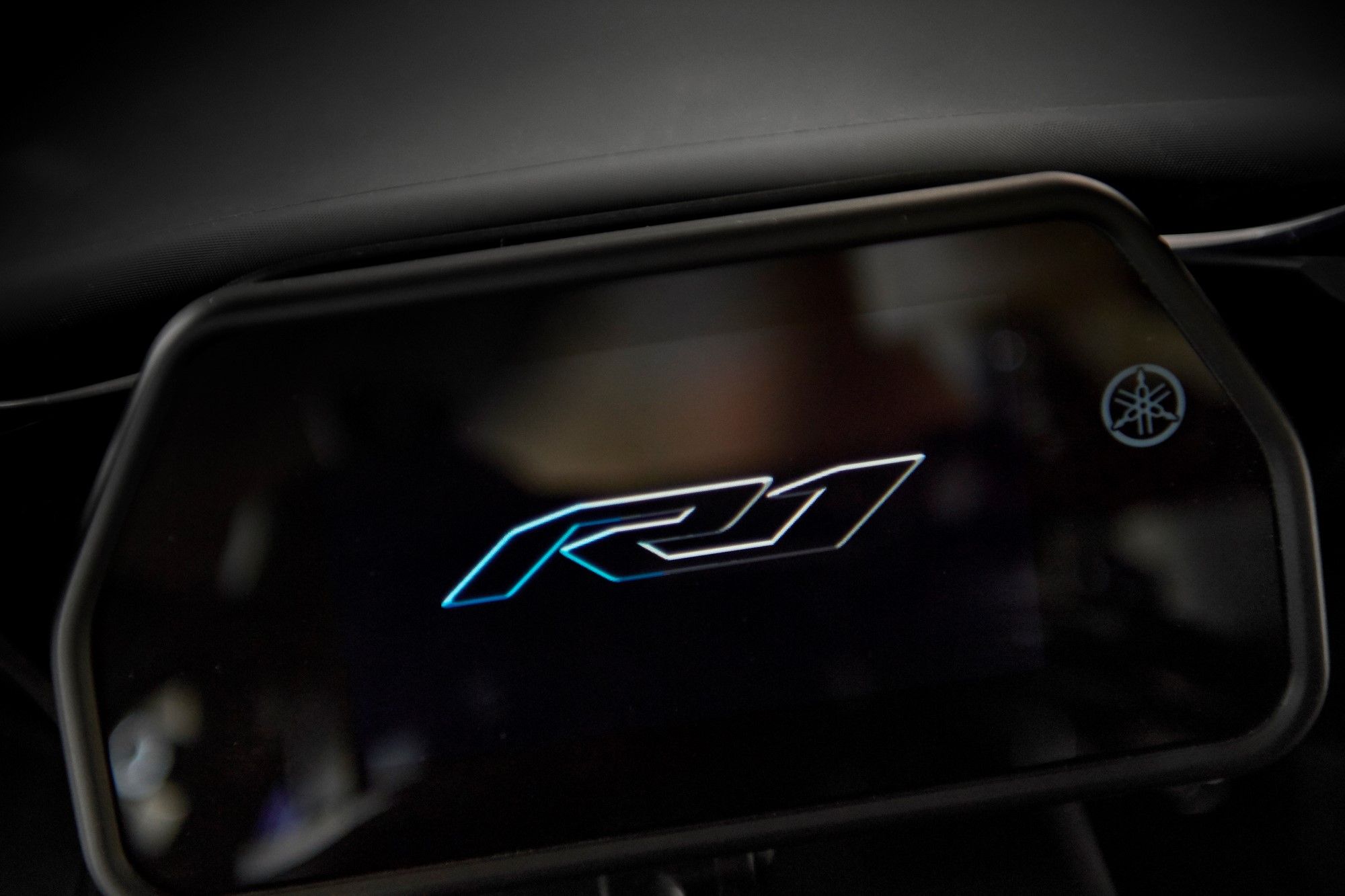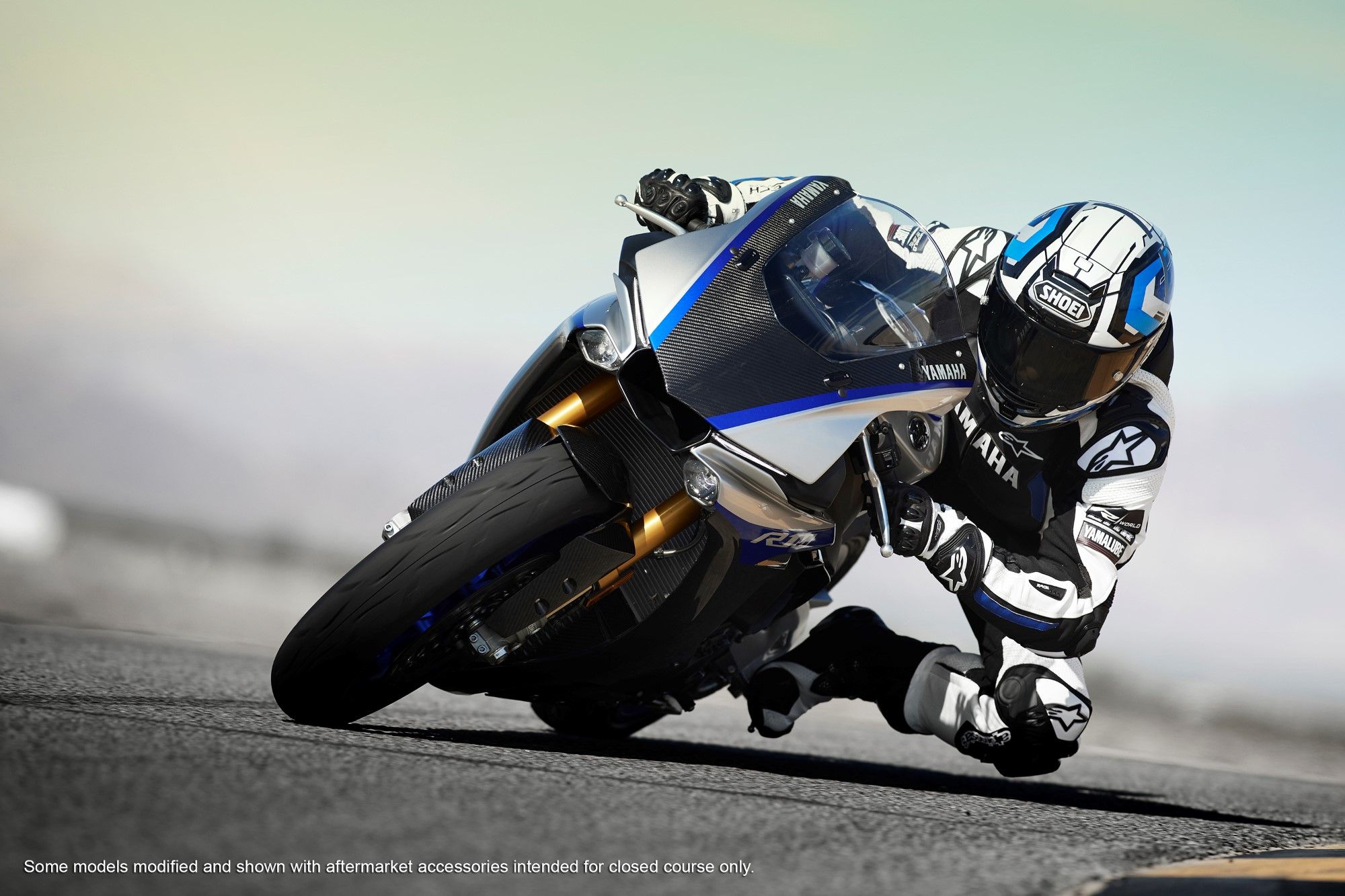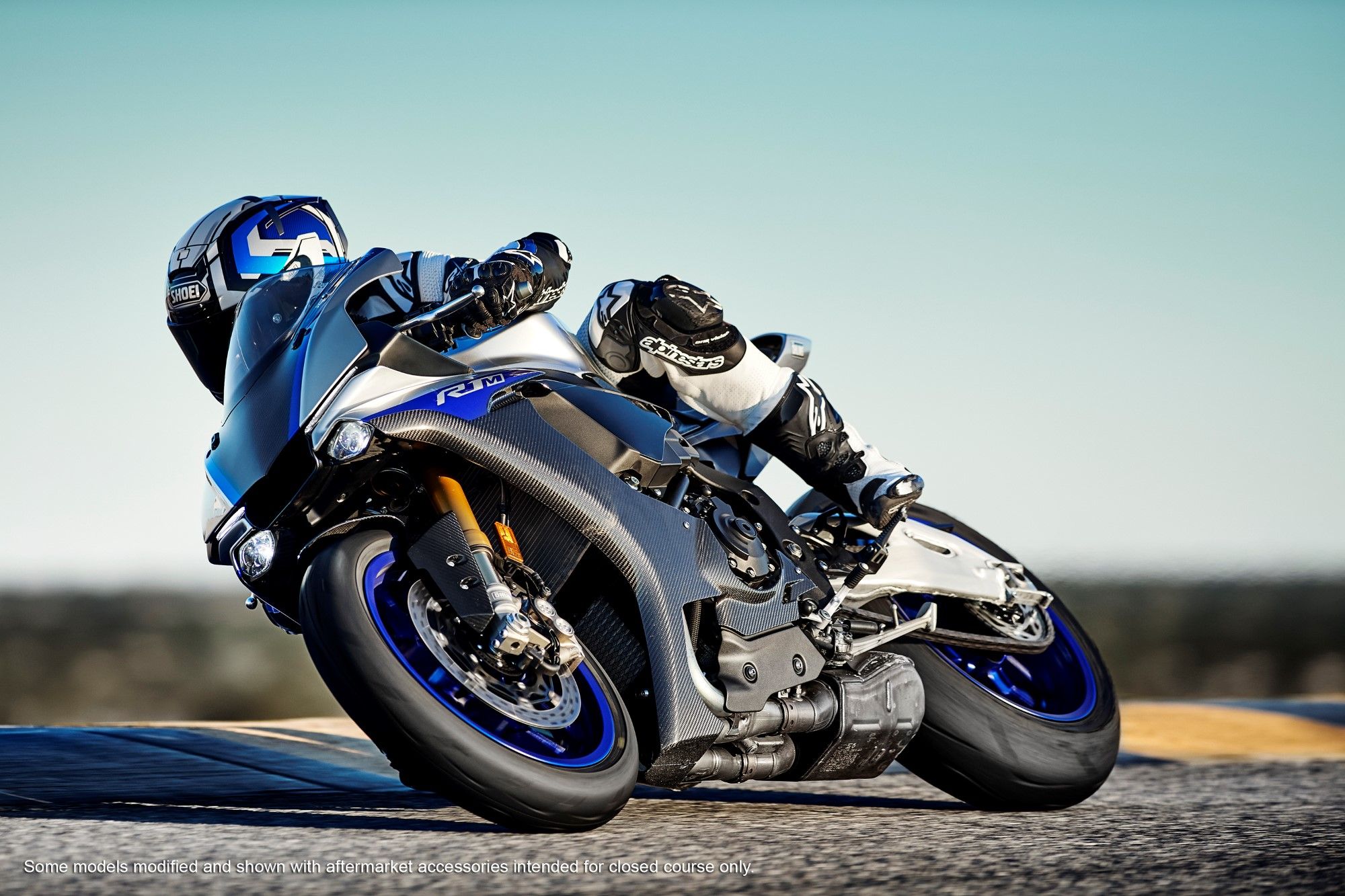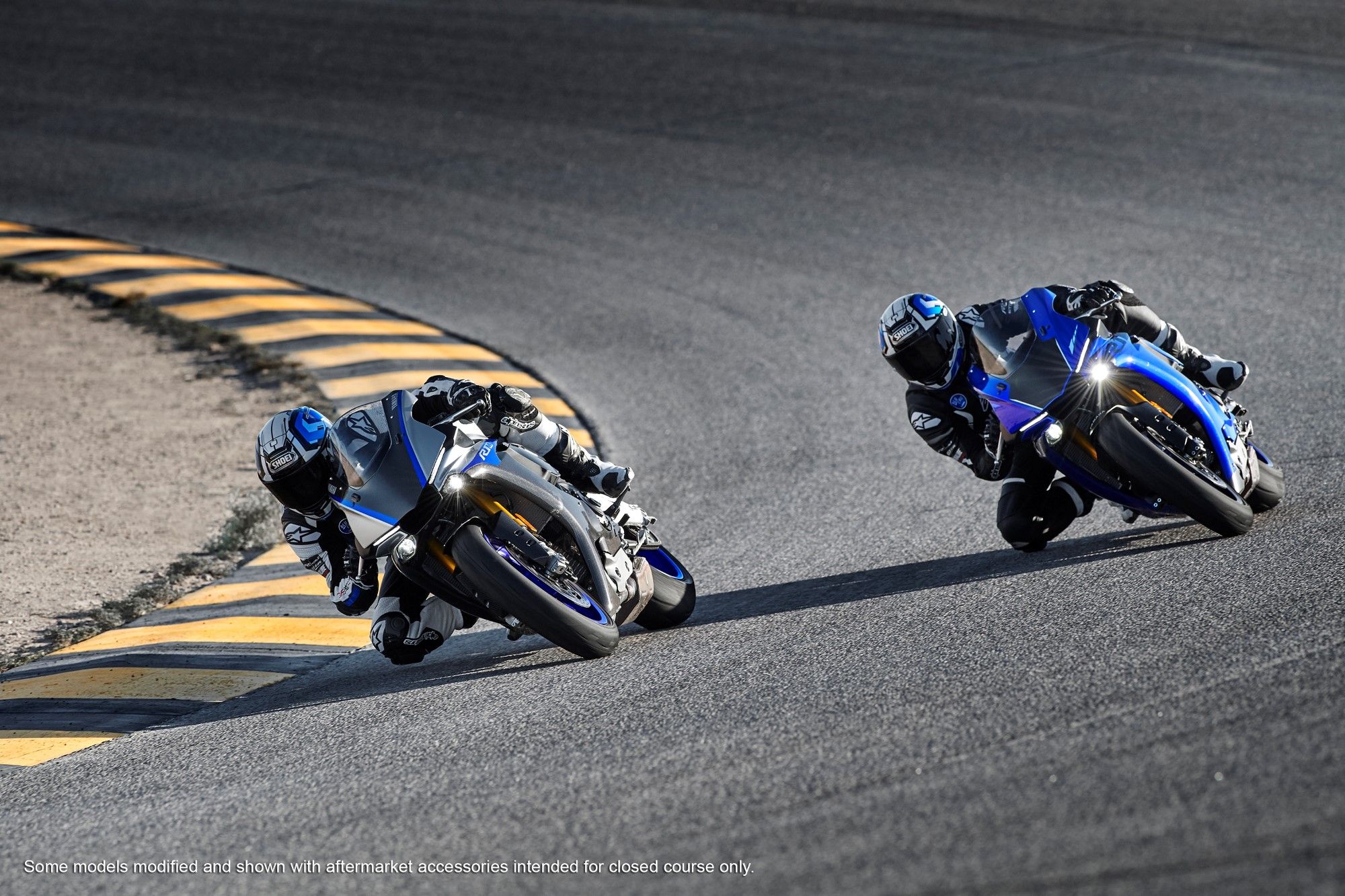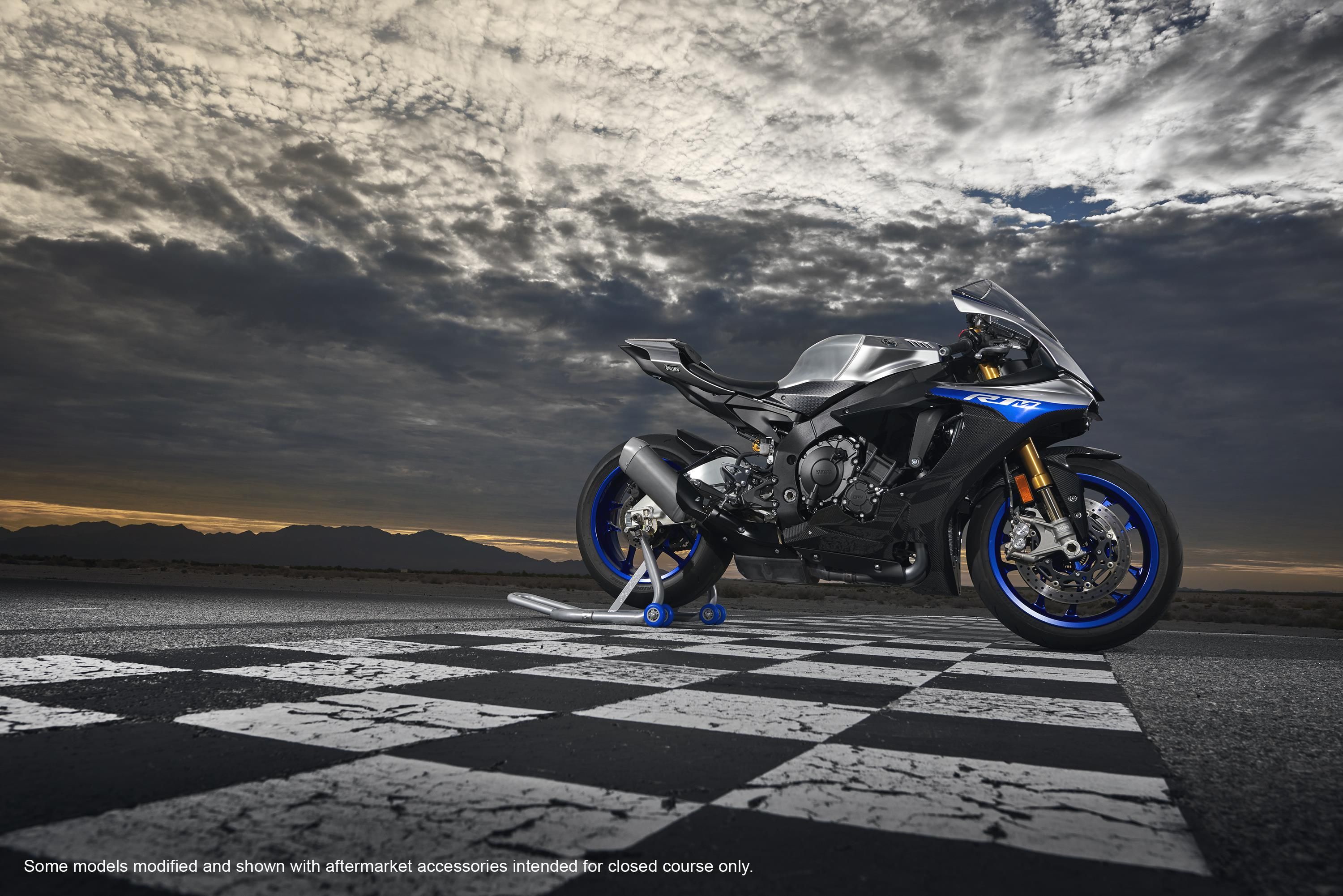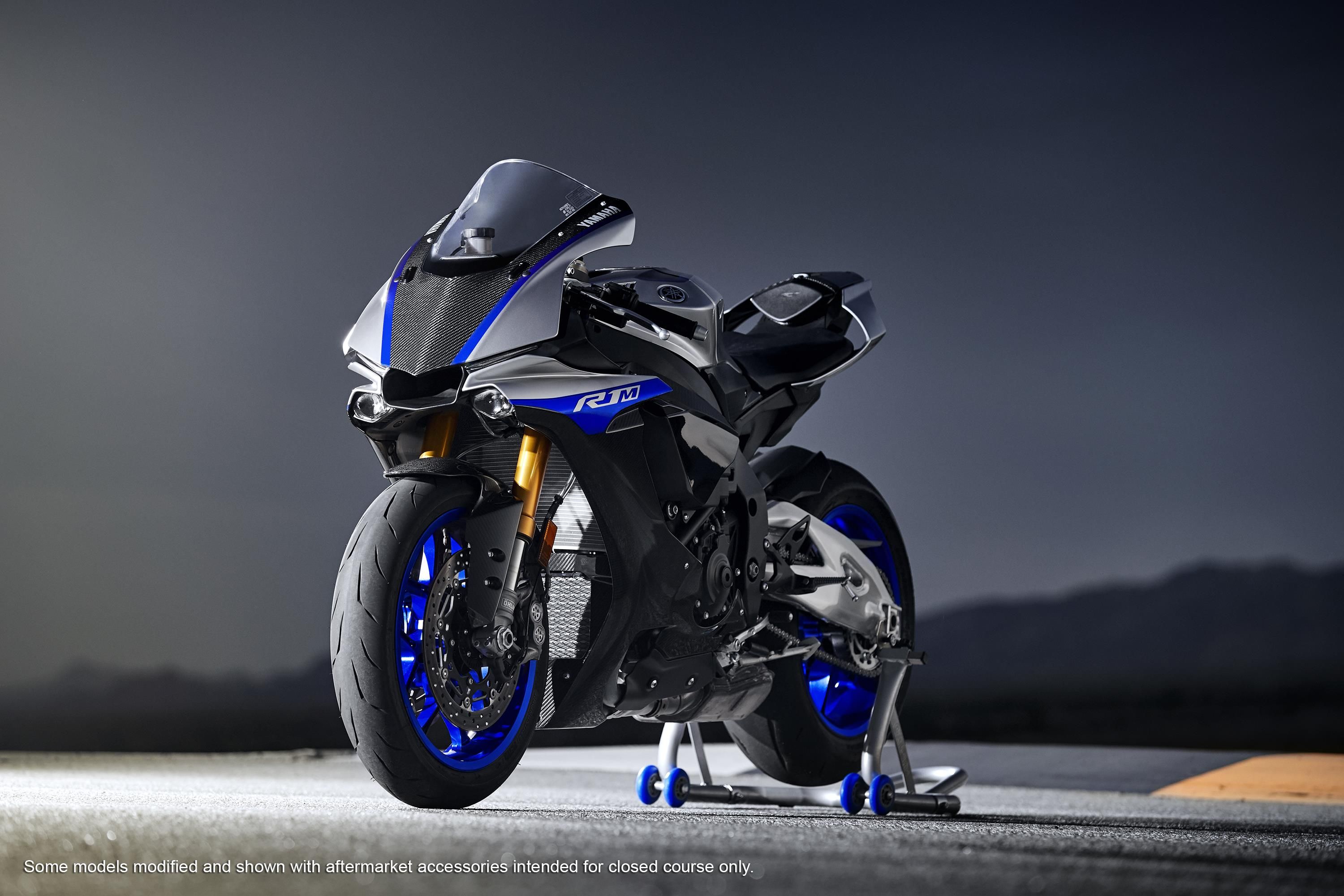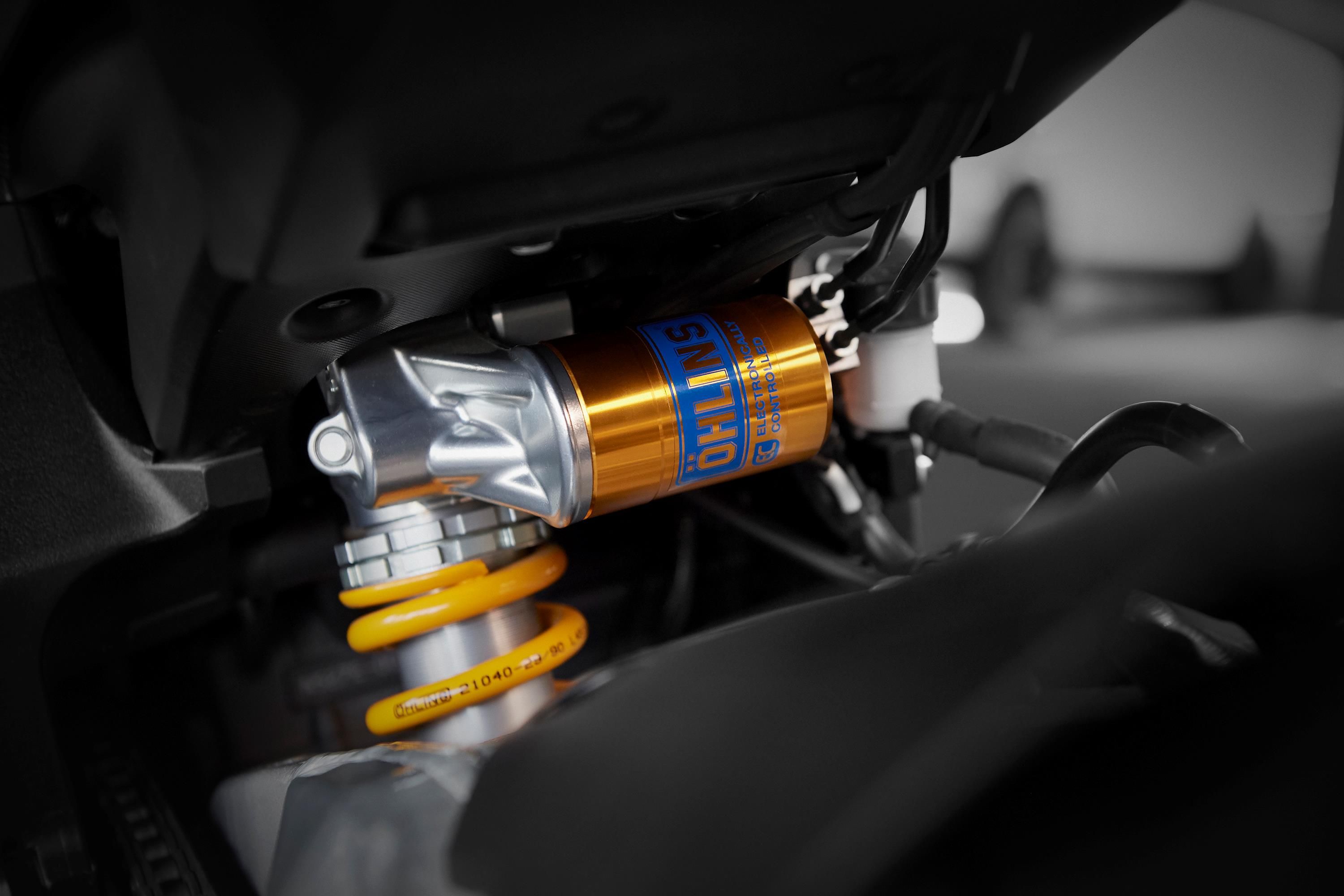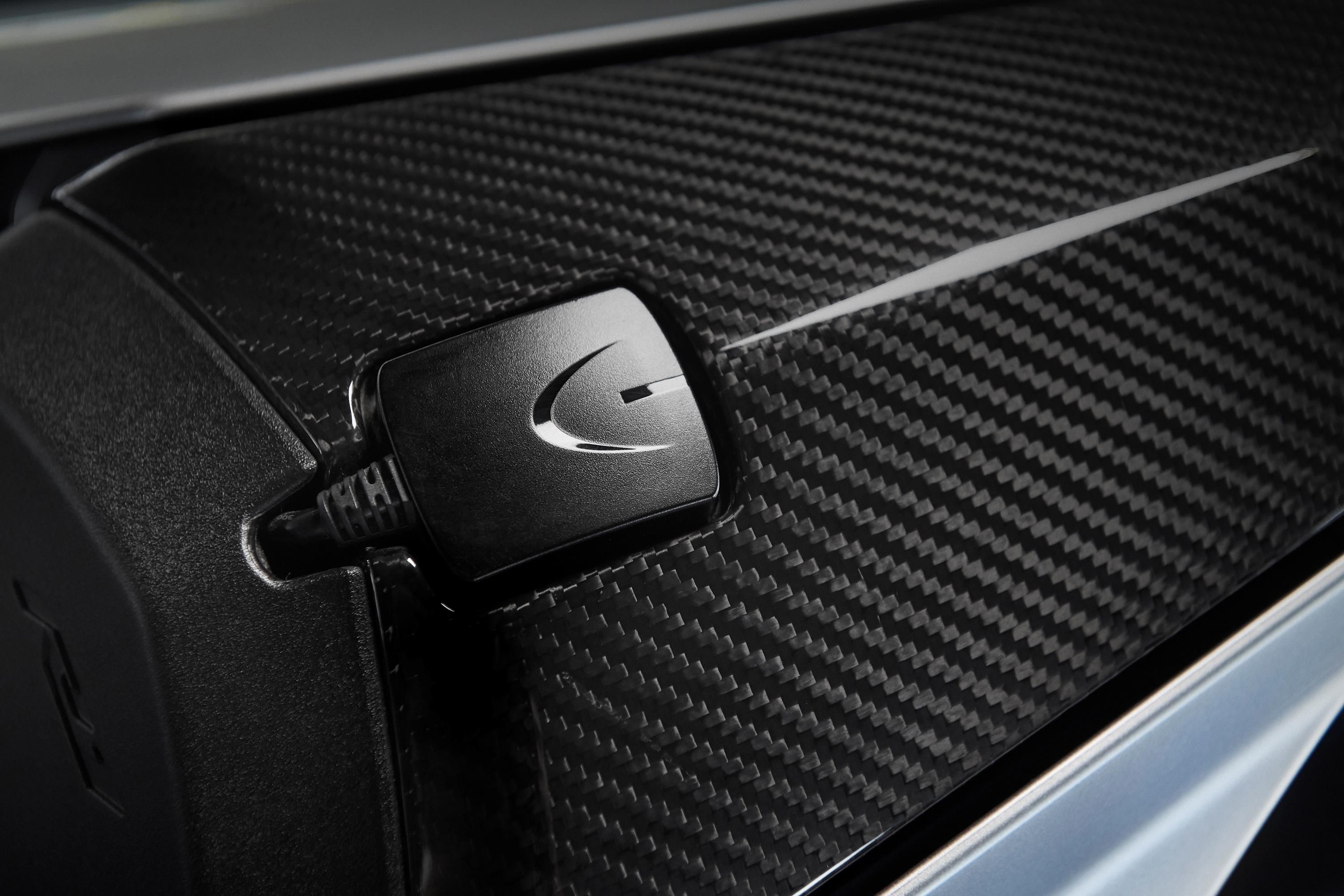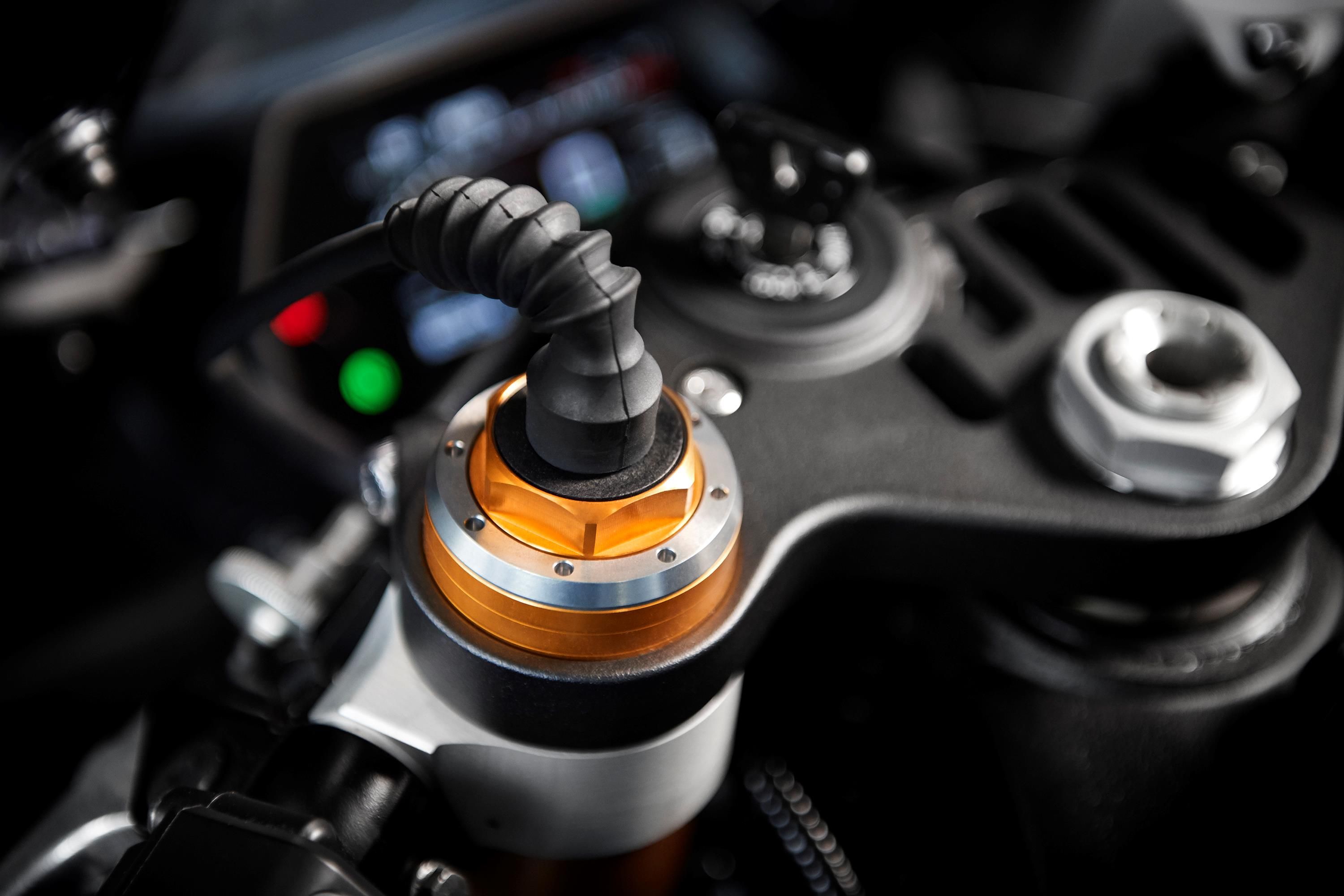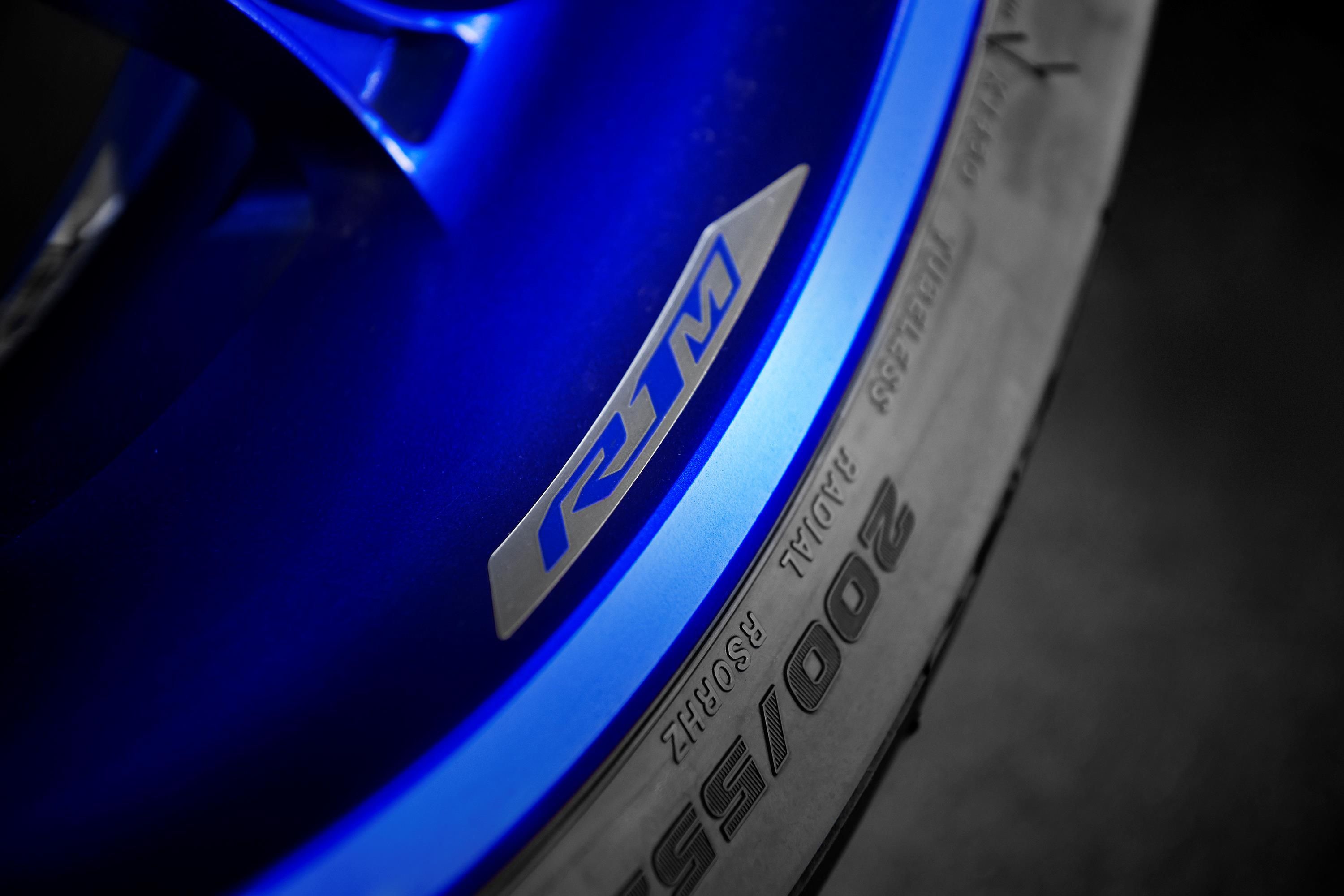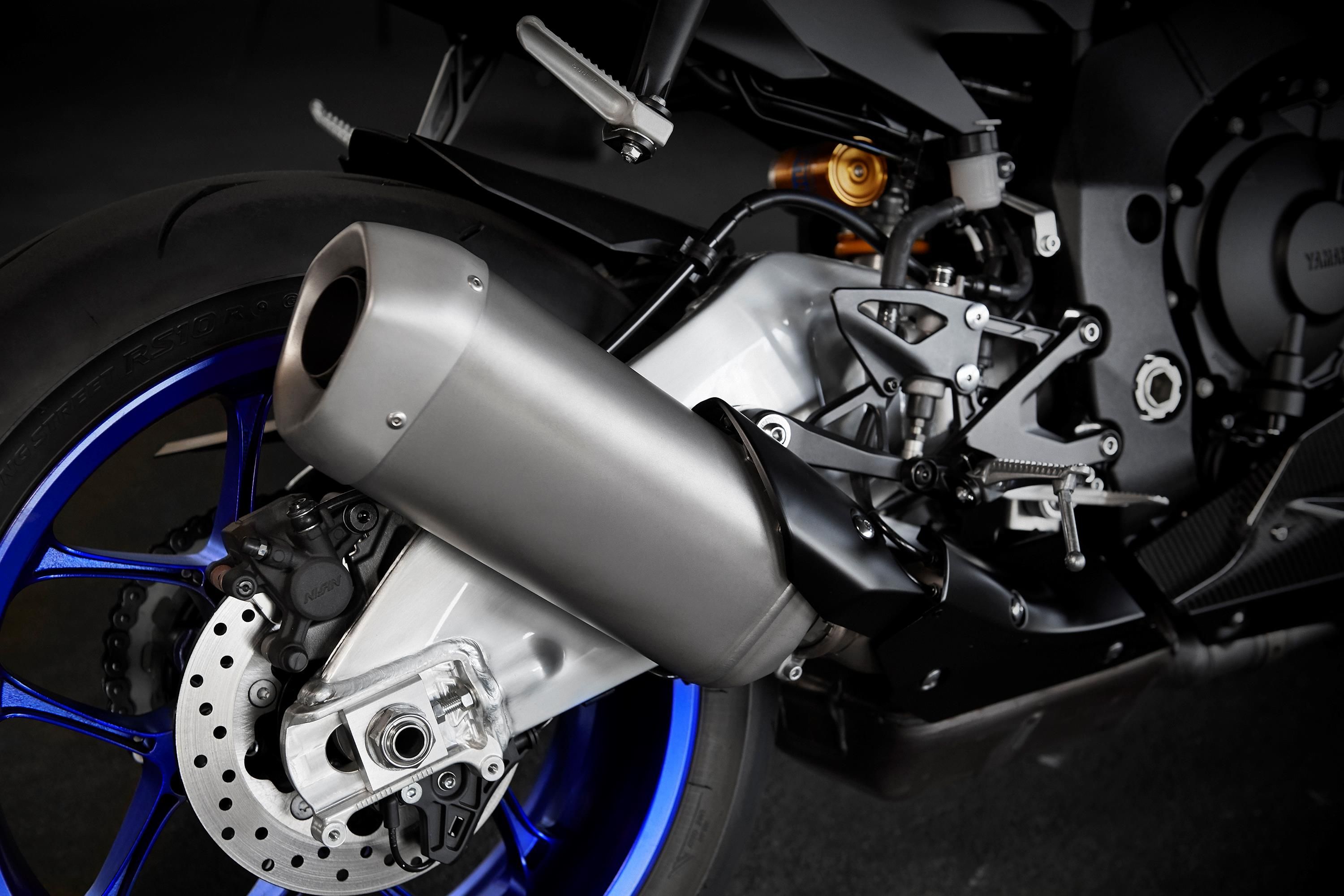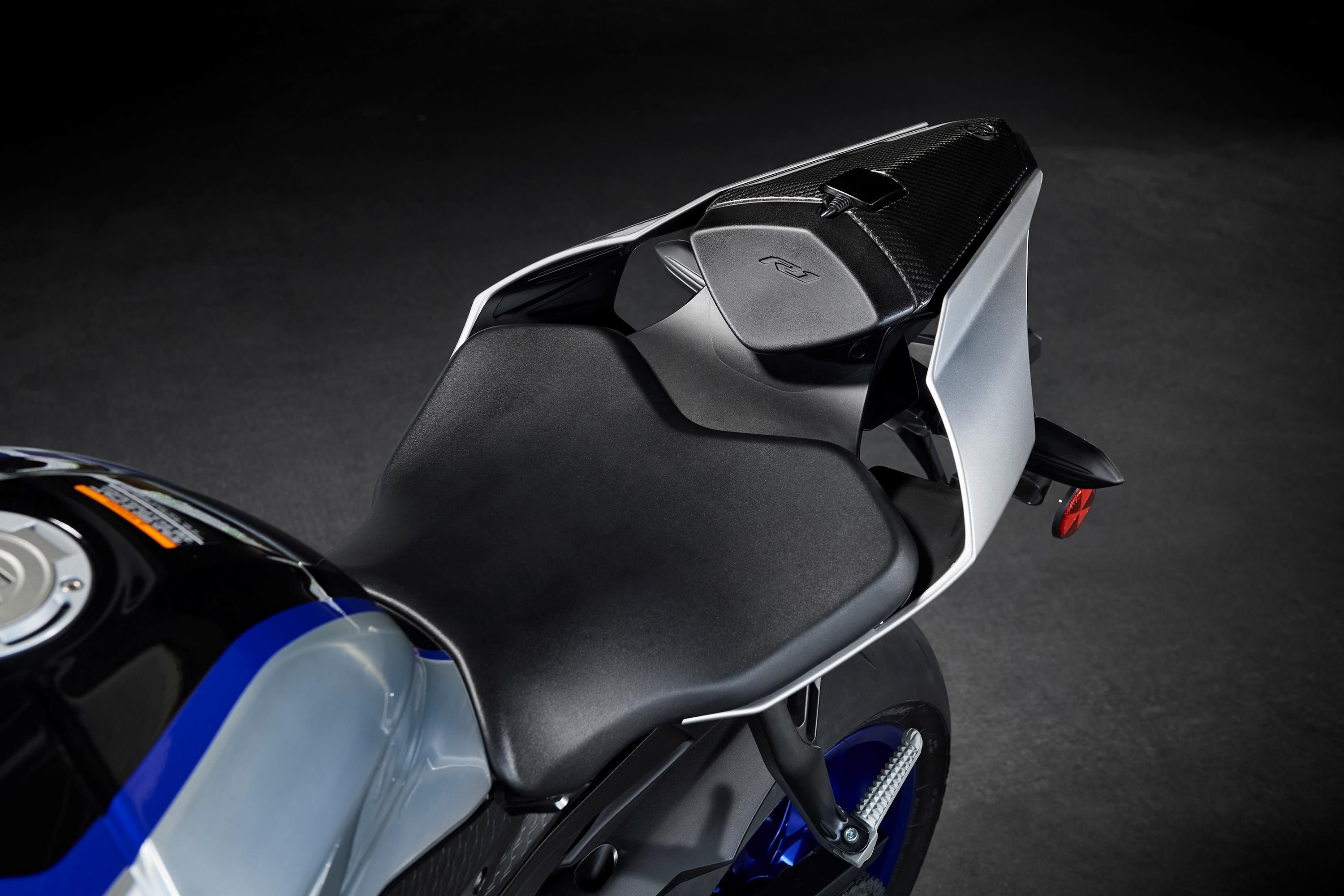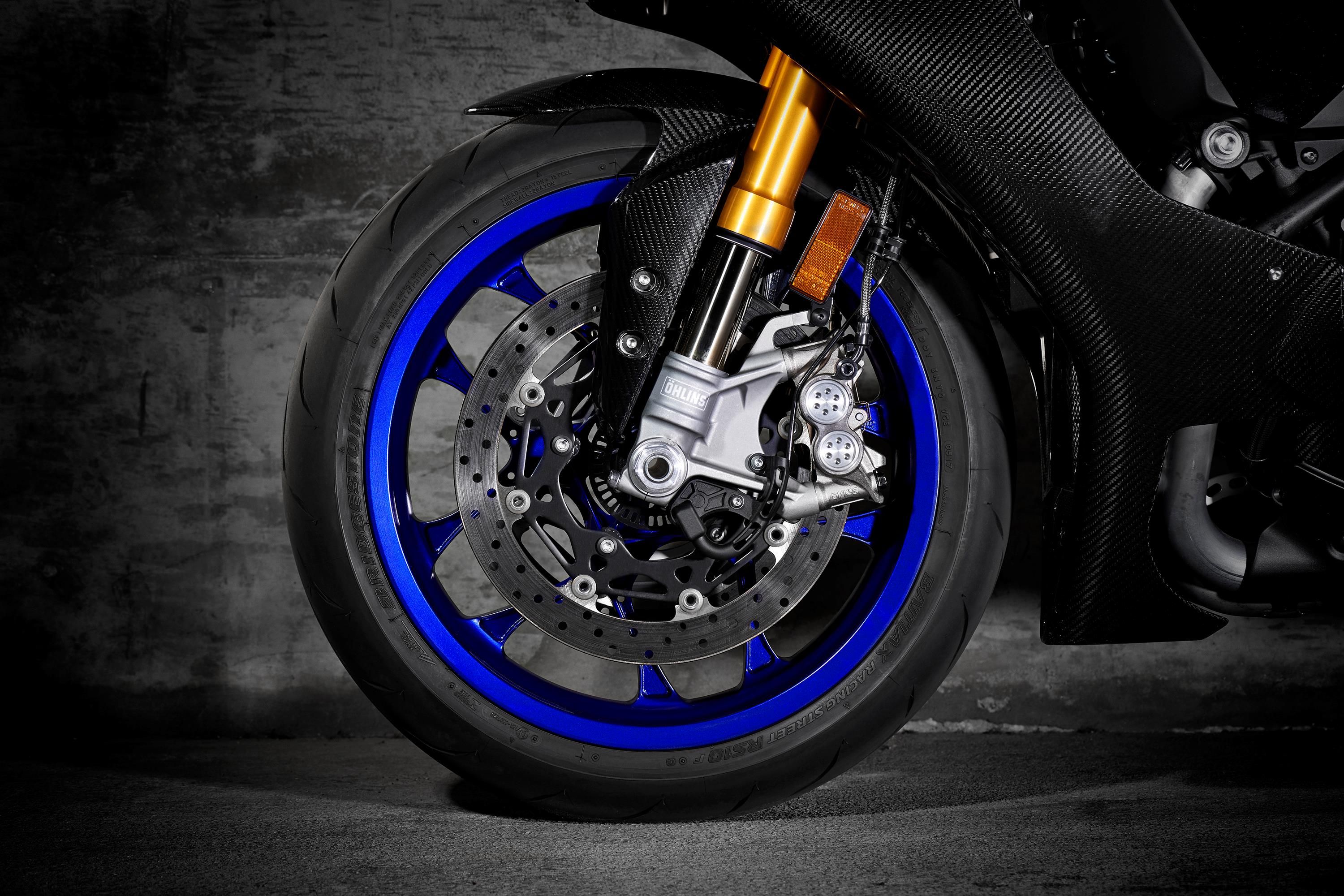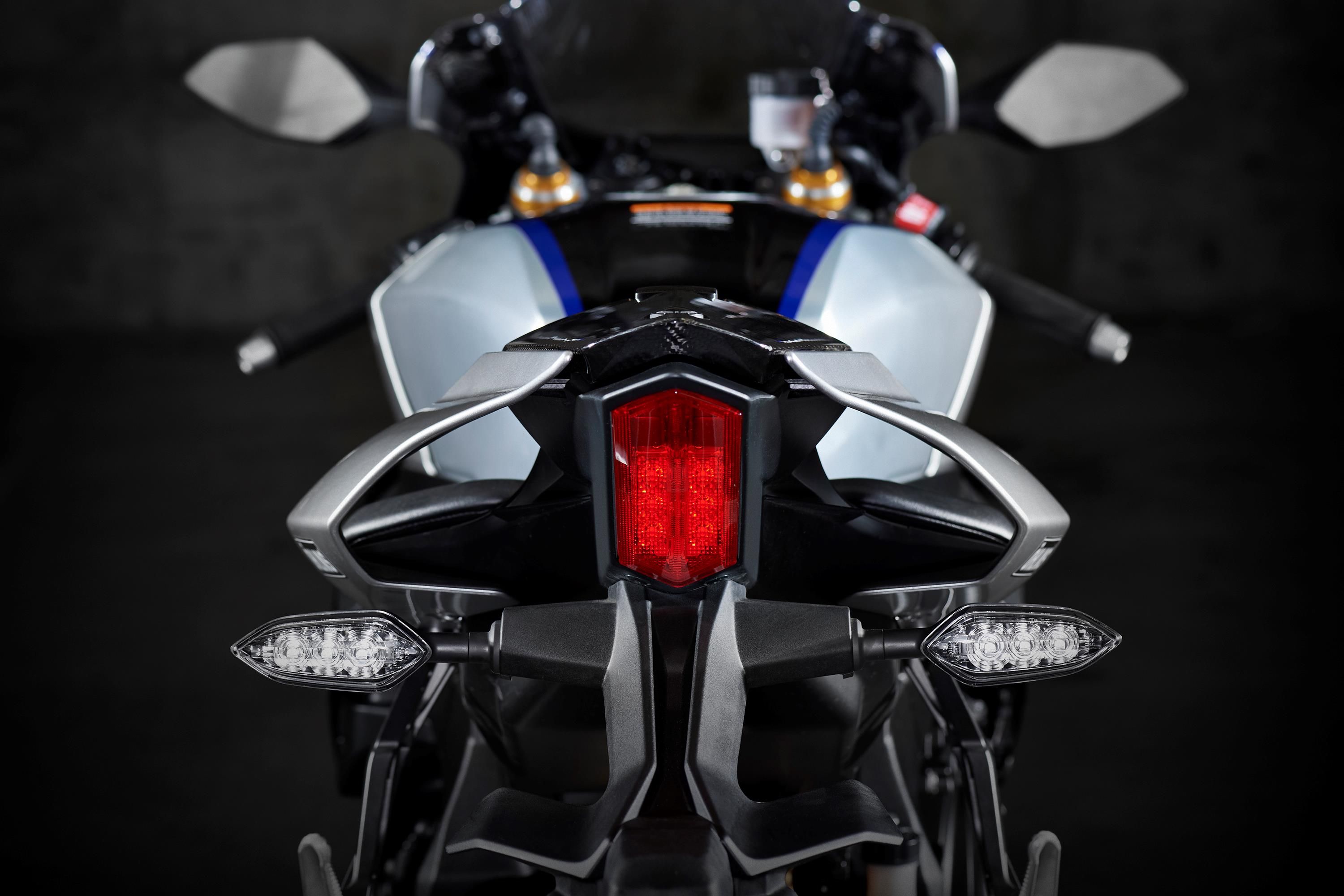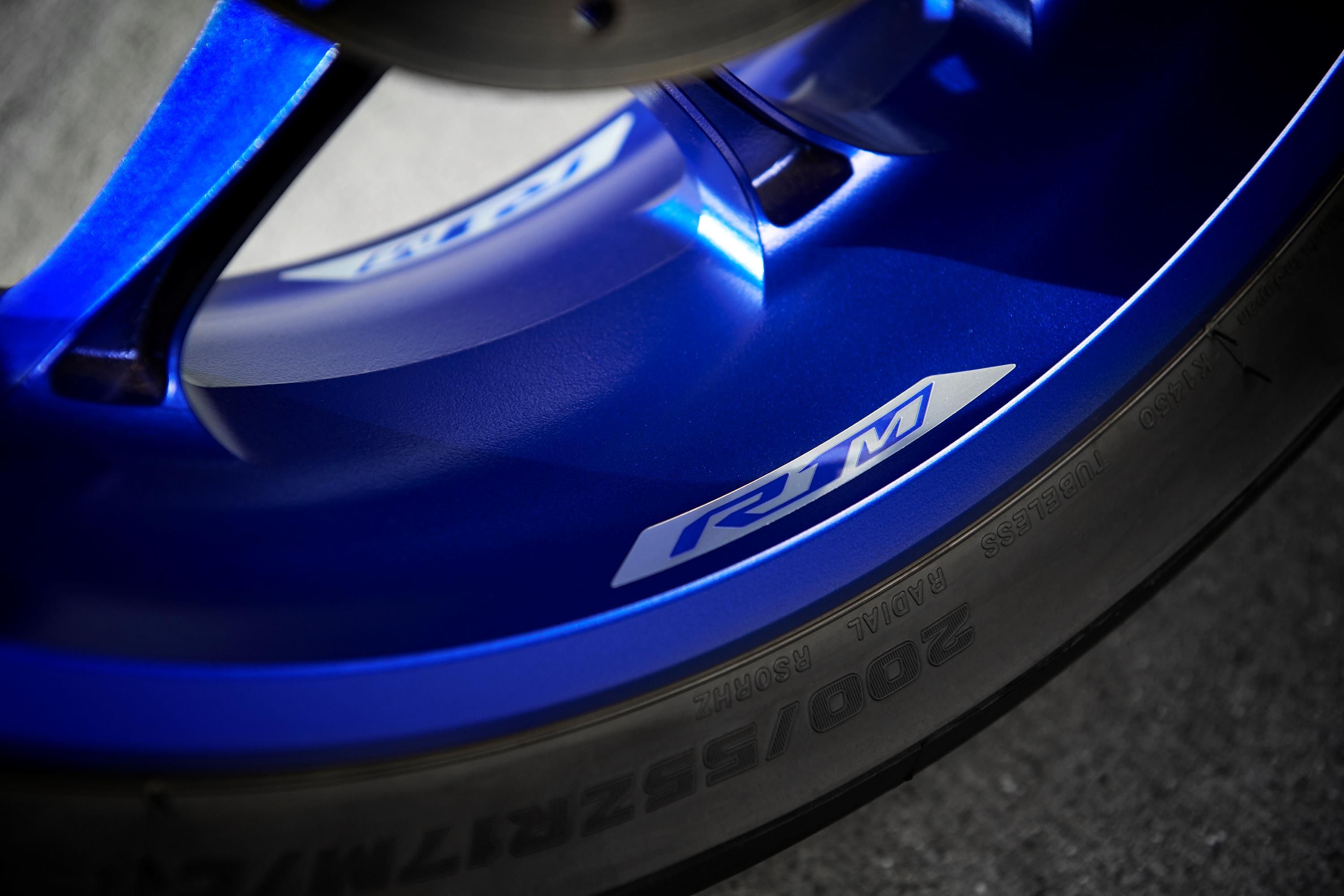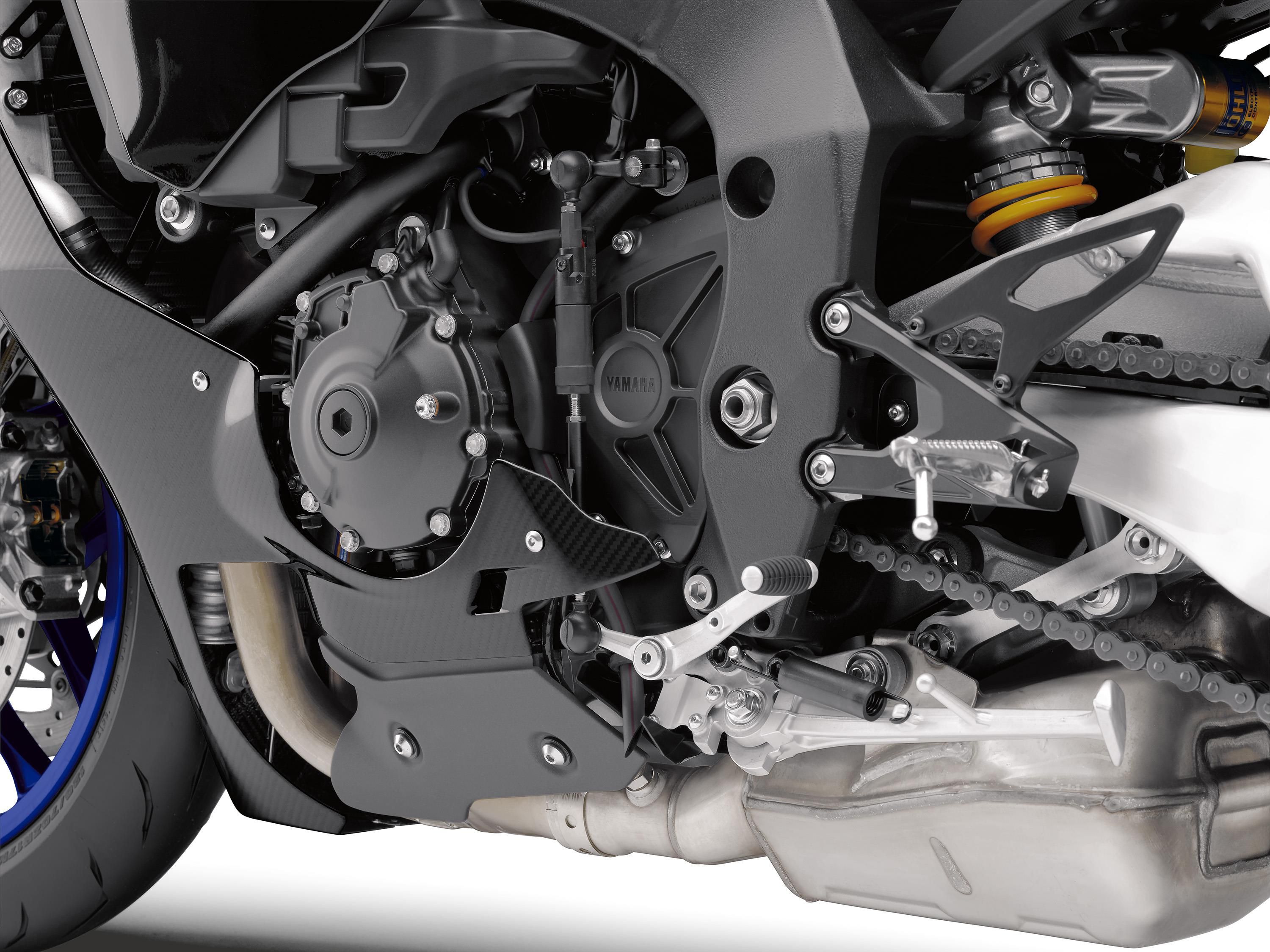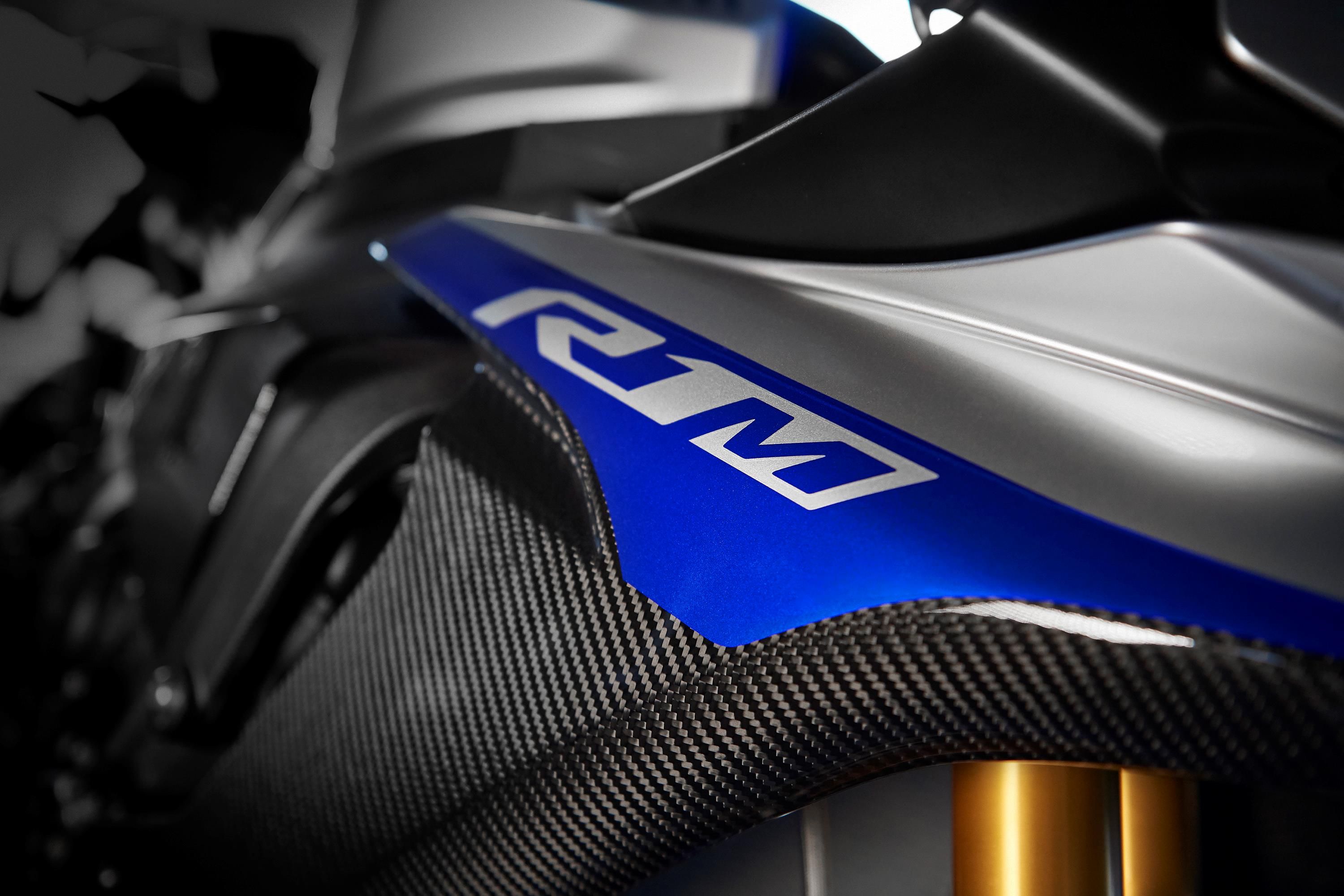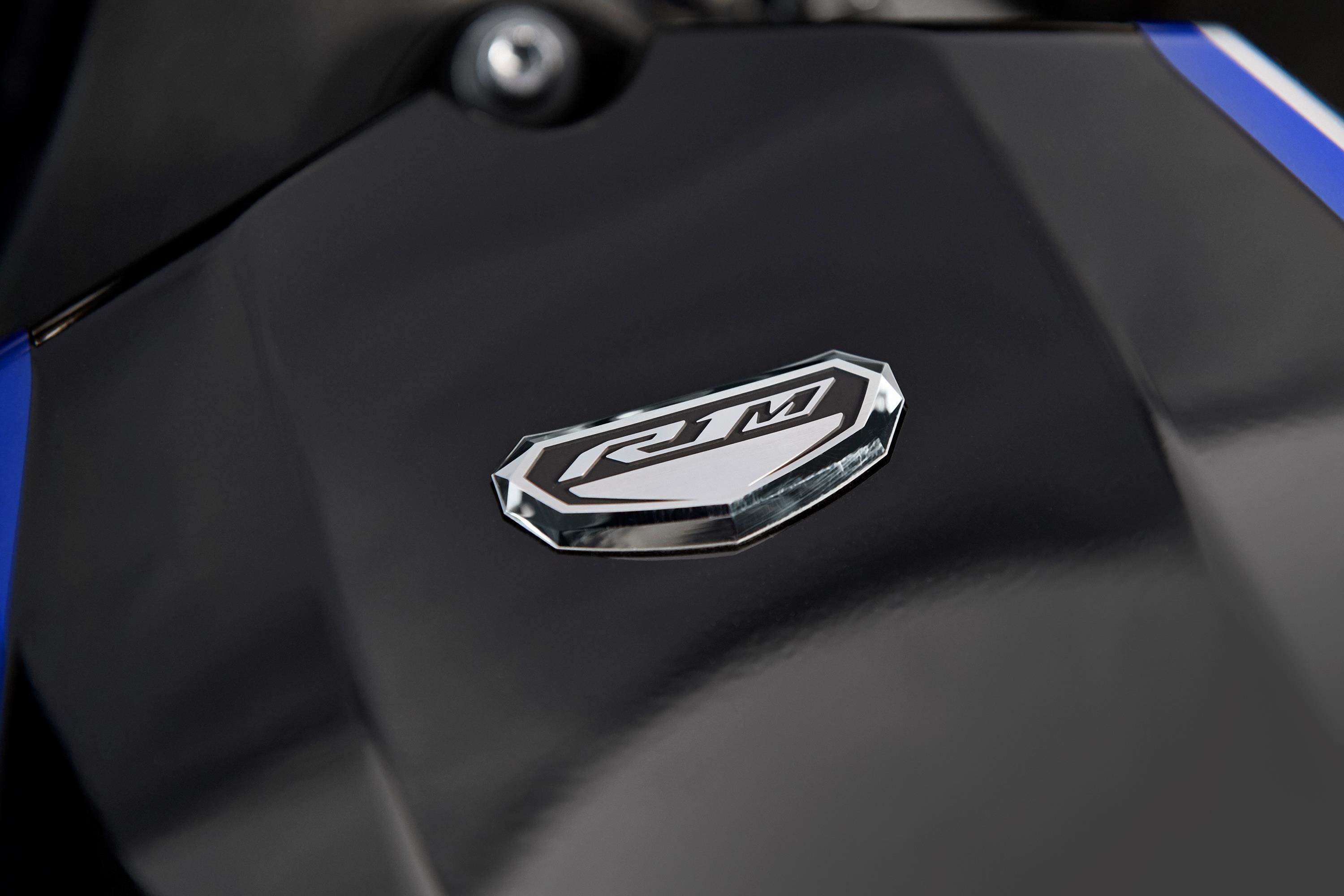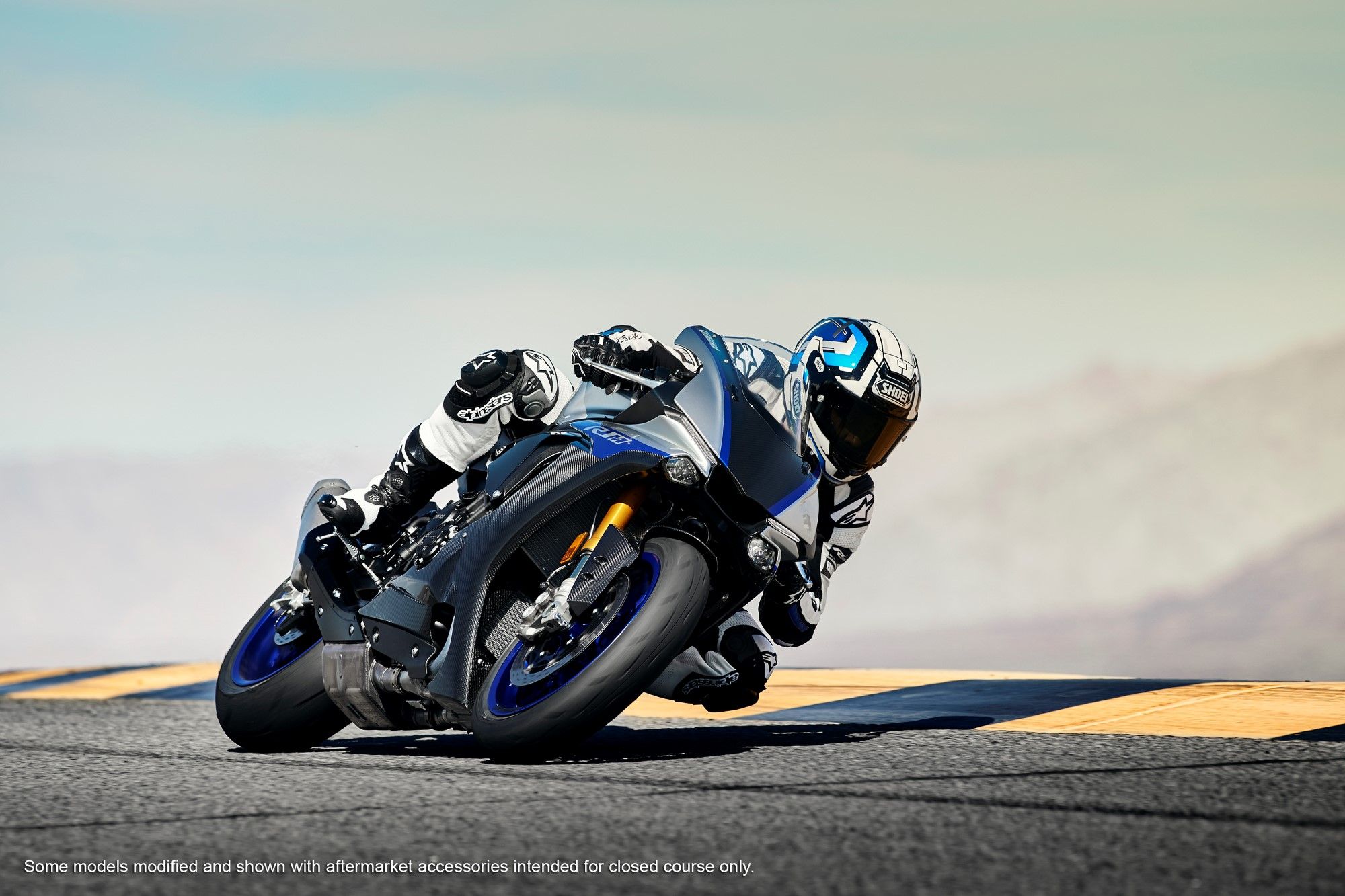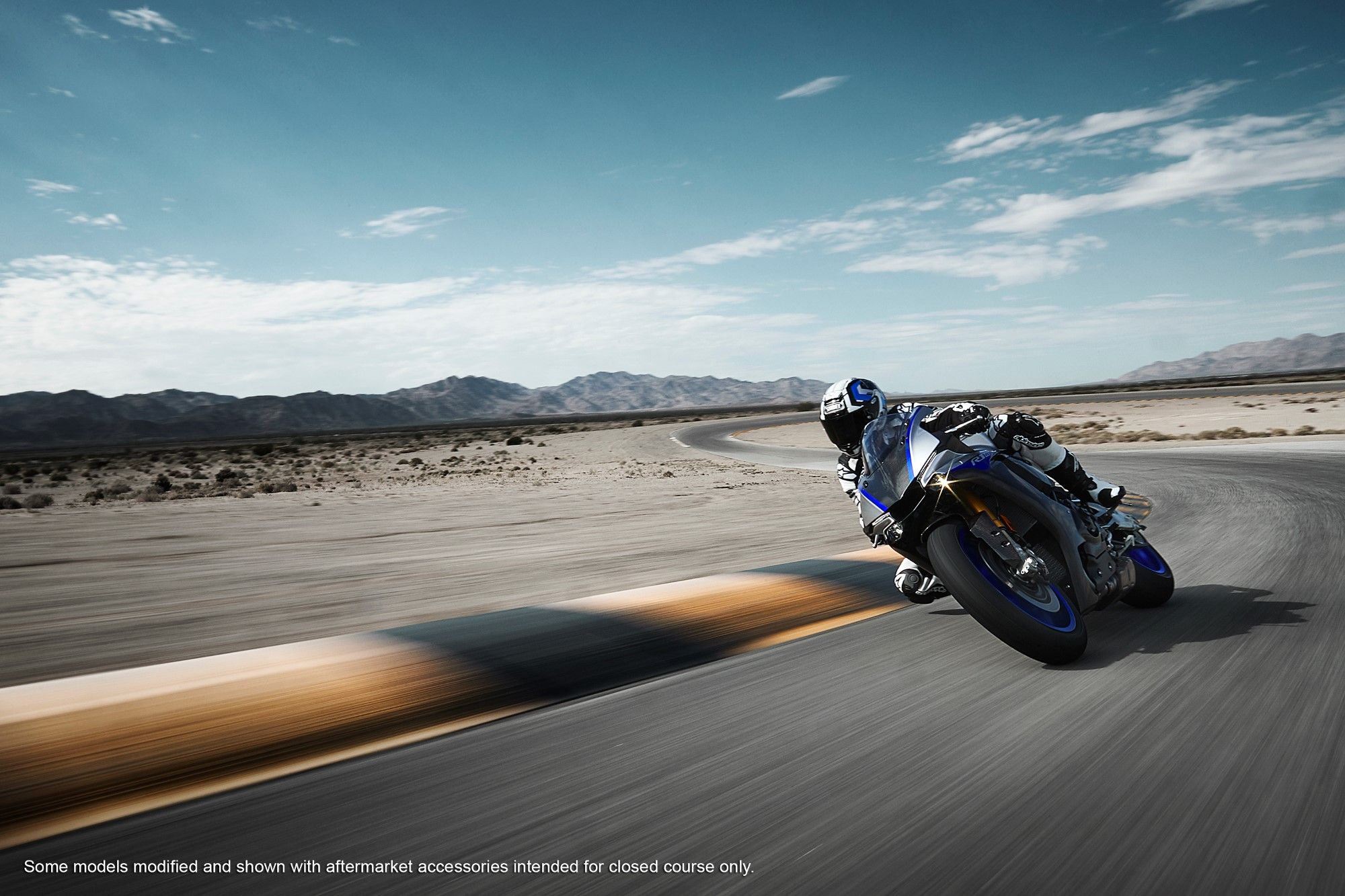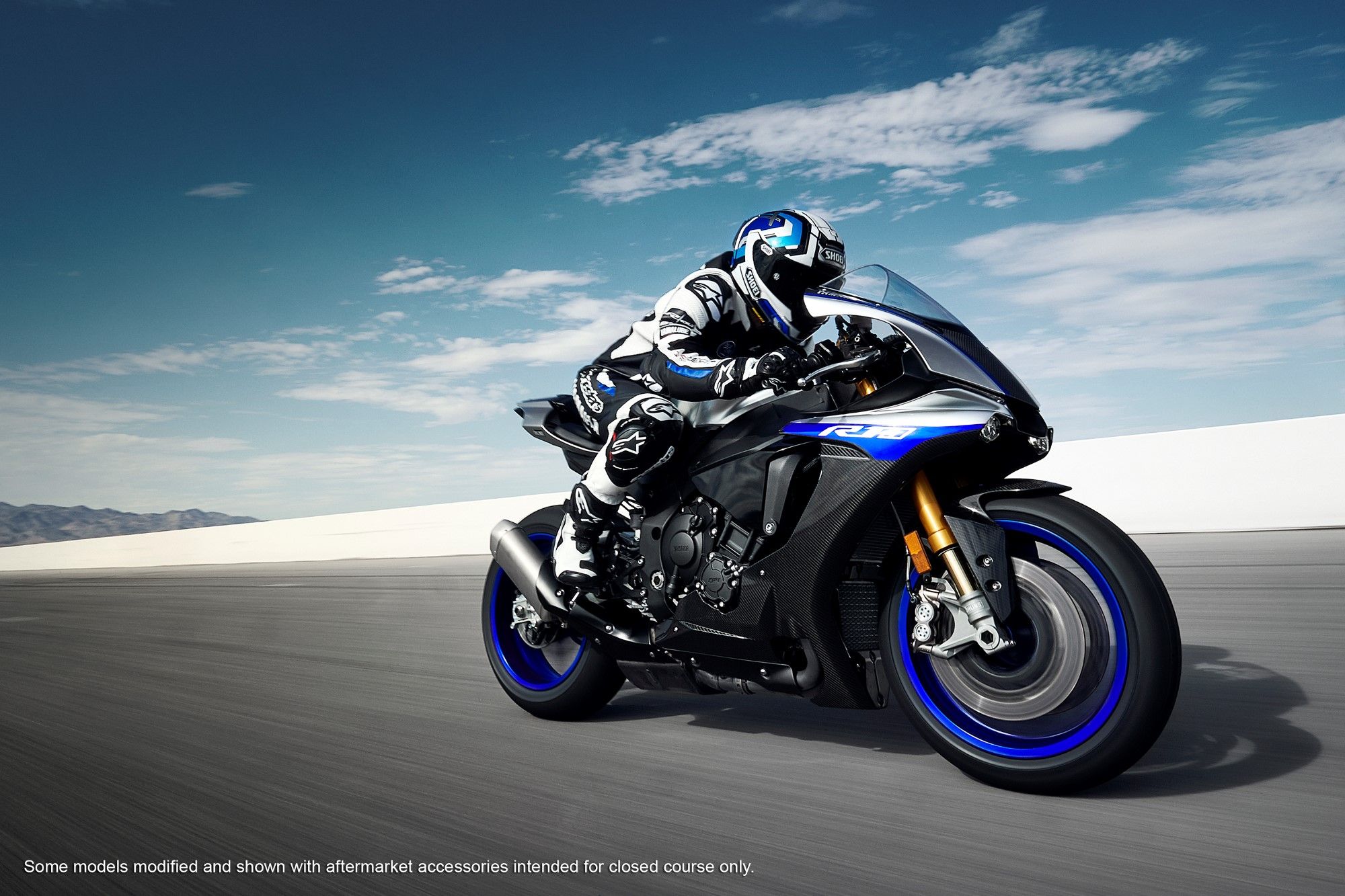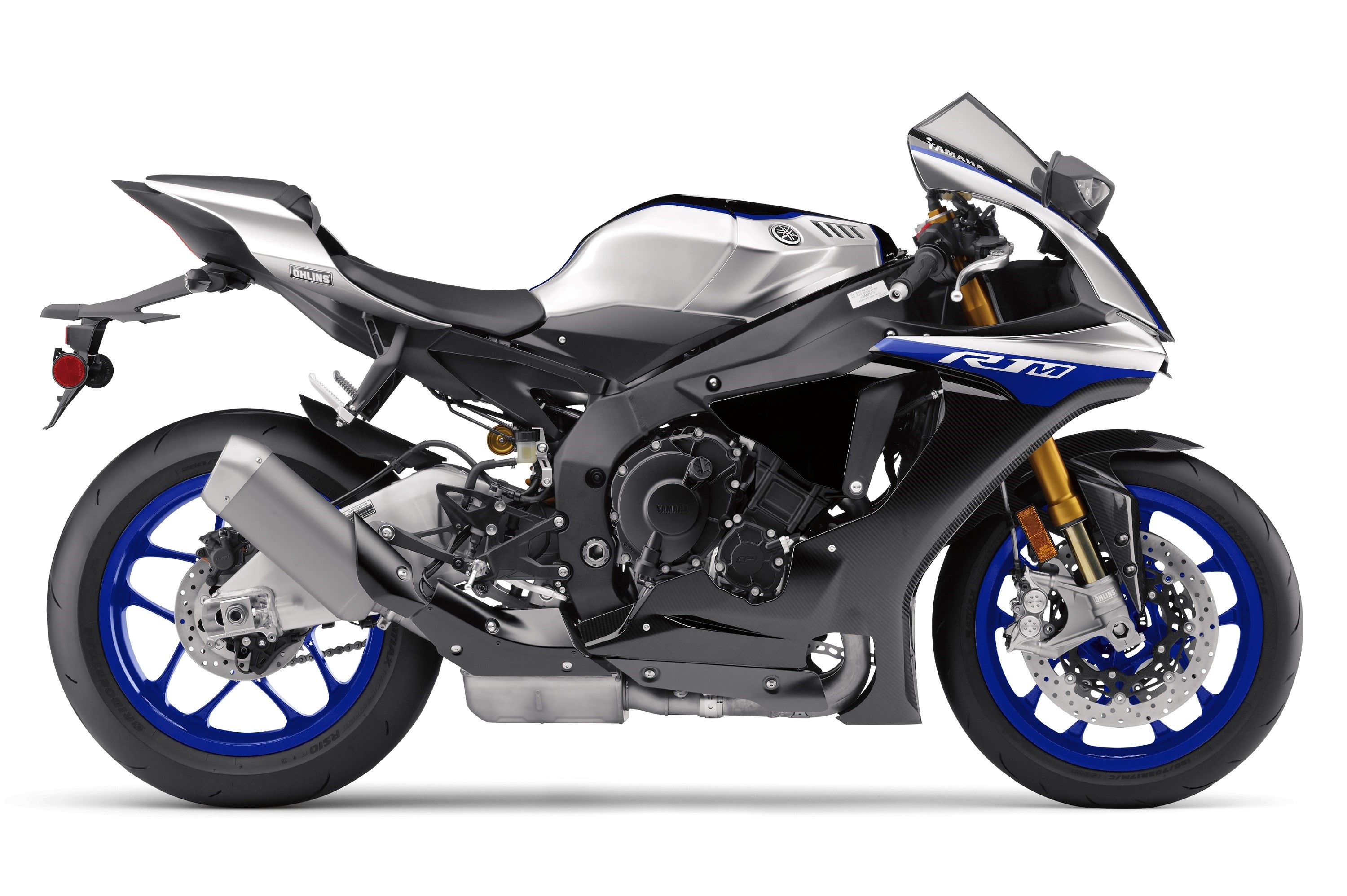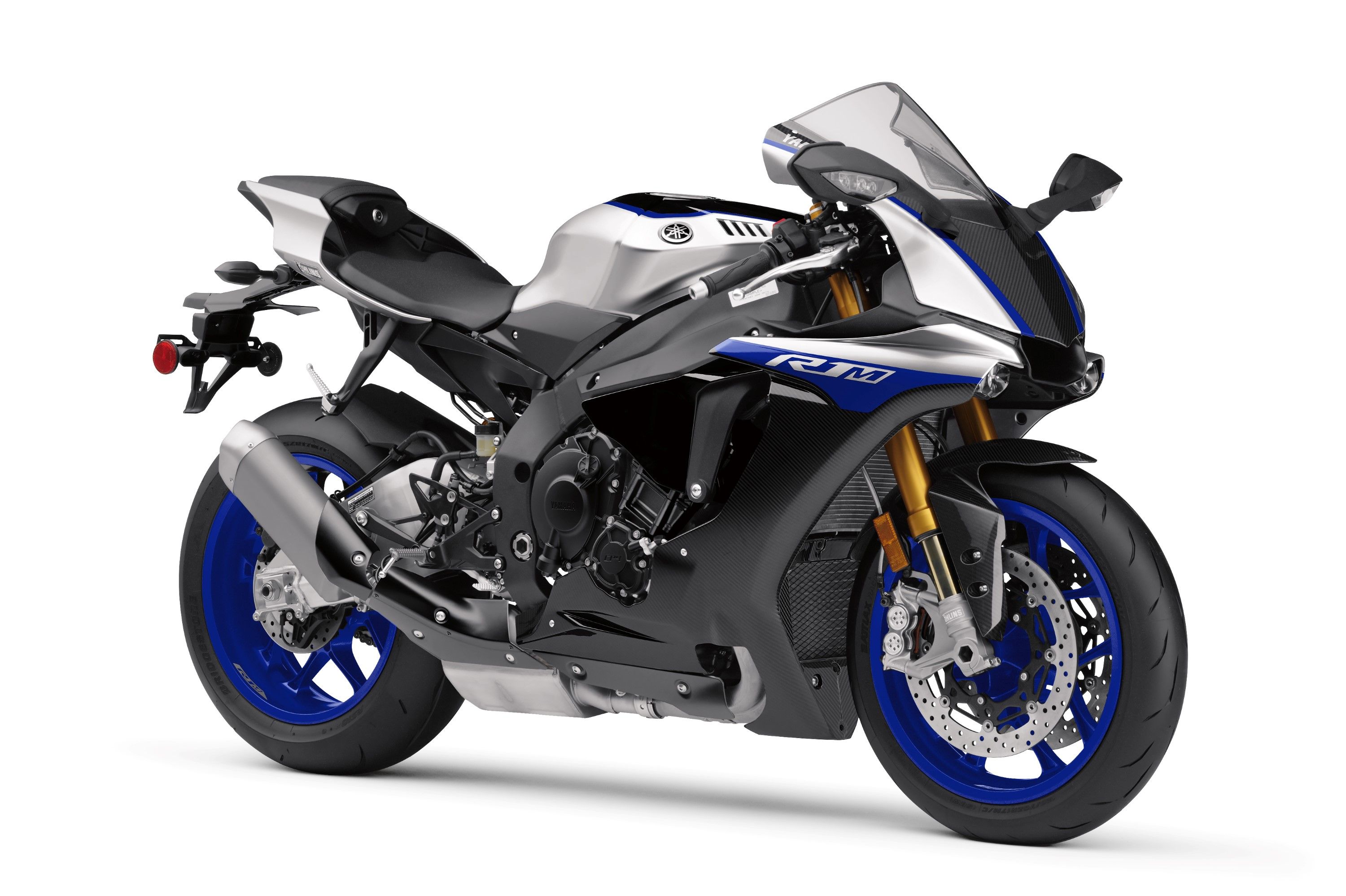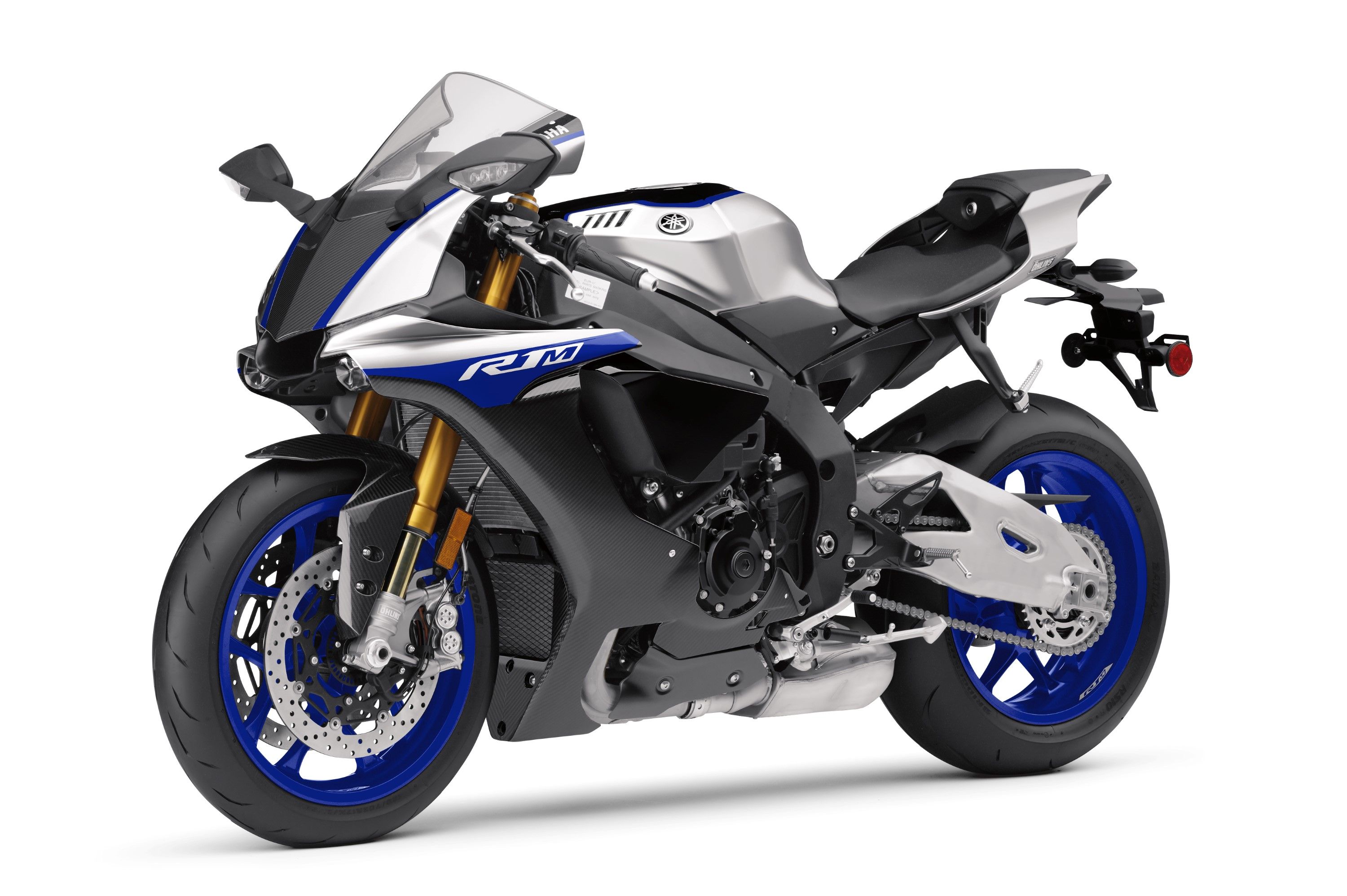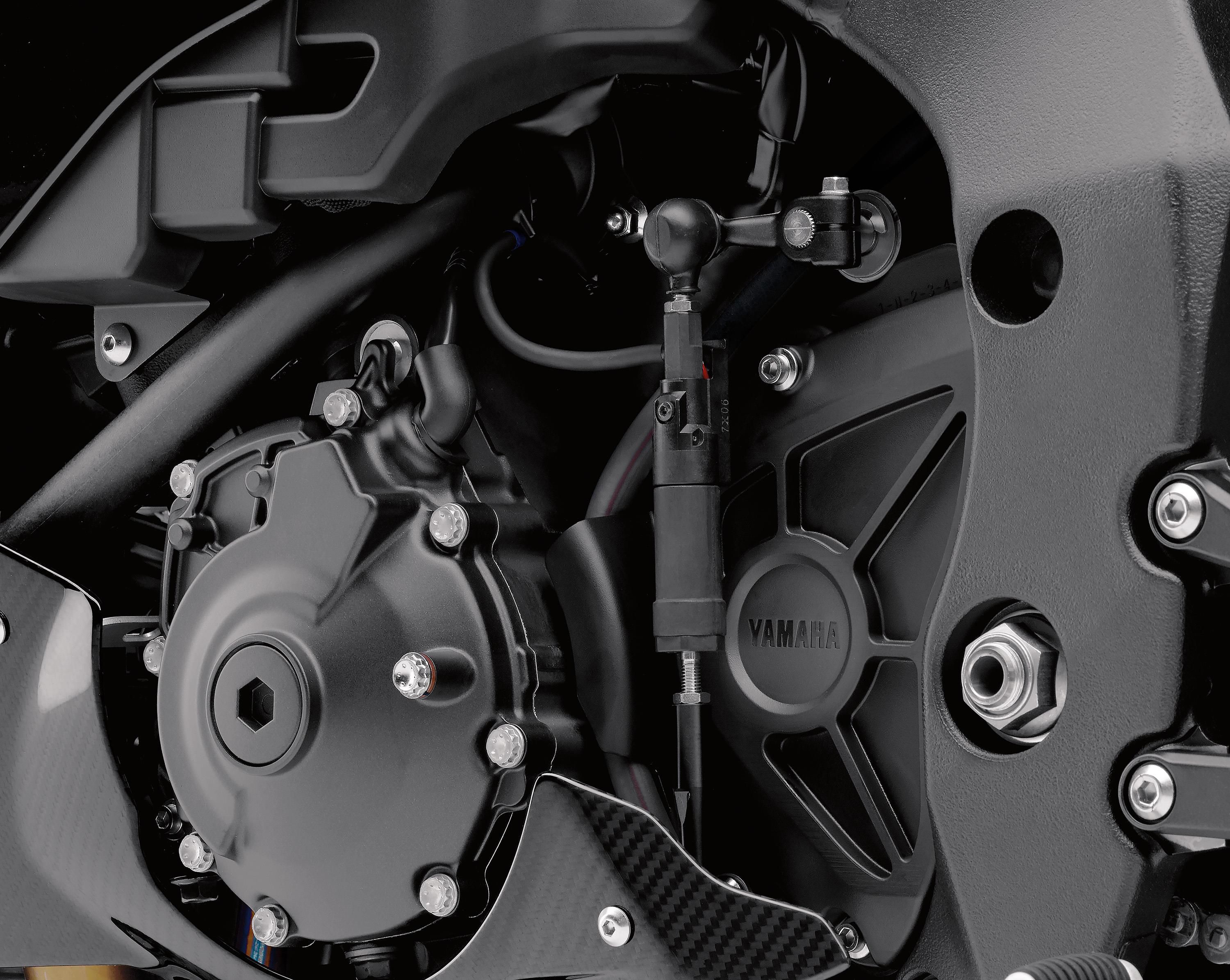Touted as the sharpest and most track-focused supersport bikes you could get your hands on, Yamaha has updated their mad YZF-R1 and YZF-R1M superbikes with recalibrated equipment and a couple of new features, keeping the competition alive and well.
Taking one step closer to the true-blue racing pedigree of the M1, the 2018 R1 series will enhance rider experience by improving suspension, shifting and fuelling to be the "most sought-after supersport motorcycles designed to deliver the pinnacle of performance on and off the track".
2018 Yamaha YZF-R1M
- Make: Array
- Model: 2018 Yamaha YZF-R1M
- Horsepower: 200
- Torque: 83
- Transmission: 6
- [do not use] Vehicle Model: Array
STYLING
|
|
ids=782177,782176 |
no_overlay=true> |
|
Yamaha YZF-R1 |
2018 Yamaha YZF-R1M |
Most of the updates are mostly underneath the skin, which itself gets a new Silver Blu Carbon paint job on the R1M. And much like it, the design of the R1M became a huge departure from its previous generation which saw a complete haul with the front fairing, fuel tank, and rear body panels.
Staying true to its MotoGP genes, the new R1M retains the minimalistic yet maniac design of the M1 on the table for its new manifestation. Right from the rakish front fairing with a center-placed air-scoop flanked with dual projector headlamps and daytime running LEDs, to the pointy rear end – the new R1M screams to be taken out on the track.
Fairing-mounted rear view mirrors incorporate LED turn indicators inspired by Ducati looks nice on this machine. The 4.5 gal hand-polished aluminum fuel tank too is borrowed from the M1, which looks big in size but is 3.5 pounds lighter than the steel ones. Artistically carved and aerodynamic panels support the vertical LED tail lamp.
However, the dual under seat exhausts of the erstwhile R1 are nowadays replaced by a single side-mounted titanium exhaust with an ugly underbelly, thus losing some points on the brawny appeal of the rear. Thanks to Euro-IV cuts. 10-spoke cast magnesium wheels are super light and come covered in Yamaha Silver Blu and gets the R1M moniker bolded on.
And of course, the R1M sheds more mass with the extensive use of our favorite carbon-fiber on the front fairing, side body panels, rear seat cowl and the fenders. Yet, the R1M weighs 443lb, 2 lb more than the standard R1. Ok. Now that’s a surprise.
The R1M features a brilliant full-color TFT instrumentation that now includes front brake pressure and fore/aft G-force readouts. It has two modes: street mode and a track mode, and places readouts accordingly such as YRC settings, a zoomed-in view of the tachometer in the upper rpm range, a lap timer with the best lap and last lap feature, gear position indicator and speed.
Overall Dimension
|
Make Model |
2018 Yamaha YZF-R1M |
2018 Kawasaki Ninja ZX-10R SE |
Honda CBR1000RR SP |
|
Length |
80.9 in |
82.3 in |
81.3 in |
|
Width |
27.2 in |
29.1 in |
28.14 in |
|
Height |
45.3 in |
45.1 in |
44.30 in |
|
Wheelbase |
55.3 in |
56.7 in |
55.27 in |
|
Seat height |
33.9 in |
32.9 in |
32.2 in |
|
Wet weight |
443 lb |
458.6 lb |
429 lb |
|
Fuel capacity |
4.5 gal |
4.5 gal |
4.2 gal |
POWERTRAIN
Yamaha might not have yet mastered in the arts and crafts department, but they do however are the overlords when it comes to building a true soul. The new Yamaha R1M comes bolstered with the same liquid-cooled, parallel four-cylinder engine which oozes out 200 hp and 83 lb-ft of torque.
The engine is coupled to a 6-speed gearbox with slick up-shifts on tap, and for 2018, the folks at Yamaha have given the Quick Shift System (QSS) an “auto-blip” downshift technology that can now accommodate clutchless downshifts along with the up-shifts. And the best part of it all, the rider can disengage the function through the Yamaha Ride Control (YRC) settings found in the newly updated TFT instrumentation.
The power figures are super-impressive, considering the fact that they have been achieved without any kind of ram-air inputs. The R1M comes with a unique Communication Control Unit (CCU), which comes with a data logging function for recording a wide range of running data, including lap times, speed, throttle position, GPS tracking, lean angle and more using GPS and Wi-Fi.
Yamaha has infused some racing DNA in the motorcycle in the form of a cross-plane crankshaft, chip controlled injection, industry-first titanium fracture-split connecting rods and forged aluminum pistons. A ride-by-wire throttle and the six-axis IMU takes care of smooth throttle response and linear power delivery all the way up to the red limitter.
Keeping the mass down are the titanium connecting rods that is around 60% lighter than steel, magnesium covers and ultra-light aluminum fasteners and the titanium exhaust system that centralizes mass low in the frame and as close to the center of the machine. All of which gives the R1M engine a responsive and potent character at high rpm.
Engine Specification
|
Make Model |
2018 Yamaha YZF-R1M |
2018 Kawasaki Ninja ZX-10R SE |
Honda CBR1000RR SP |
|
Capacity cc |
998 |
998 |
999 |
|
Bore/ Stroke in |
76 / 55.1 |
76 / 55 |
76 / 55 |
|
Output |
200 hp @ 13500 rpm |
197 bhp |
189 hp @ 13000 rpm |
|
Torque |
83 lb.-ft @ 10000 rpm |
83.3 lb.-ft |
85.5 lb.-ft @ 11000 rpm |
|
Type |
Liquid-cooled inline 4 cylinder DOHC; 16 valves |
4-stroke, Inline 4 cylinder, DOHC, 4-valve, Liquid-cooled |
Liquid-cooled 4-stroke 16-valve DOHC Inline-4 |
|
Clutch type |
Multiplate assist and slipper clutch |
Wet- Multiplate with slipper assist |
Wet- Multiplate with slipper assist |
|
Transmission |
6-speed with Quick Shift System (QSS) an “auto-blip” downshift |
6-speed, Kawasaki Quick Shifter (KQS) |
6-speed with quick shifter and auto-blipper |
RIDE AND HANDLING
Yamaha put all its trust on the M1 spec Deltabox frame and has been bolting on its Superbikes onto it ever since. It makes use of the engine as a structural member that is always known to be a weight reducing method that also improves handling. With the 24 degrees of rake and 4 inches of trail, it is in proper sportsbike territory.
Yamaha has somehow managed to keep the R1M street legal but with the seat height is just a hair below 34-inches tall, and the handlebar and footrest placement pulls the rider into a very aggressive, forward-leaning riding position. This machine is strictly built to be a track-tastic screamer and not your grocery runner. Of course, you wouldn’t be reading this otherwise.
The YZF-R1M has one a neat trick up its sleeve with the Öhlins Electronic Racing Suspension (ERS) getting updated with the latest Smart EC 2 ERS system. The new adjustment modes can now be fine-tuned via the YRC settings using a smartphone app connected to the motorcycle’s Communication Control Unit (CCU).
The R1M comes added with Yamaha’s in-house developed intelligent system of six-axis Inertial Measurement Unit (IMU), which provides the precise data of every aspect of the engine to the ECU – be its lap times, top speed, lean angle – whatever. It aids in activating R1M’s electronic gadgetry, which includes rear wheel Slide Control System (SCS) and Traction Control System.
The Lift Control System (LIF) on the 2018 R1M also gets further refinements to prevent the front end from lifting off the ground during those hard acceleration scenarios. Thanks to the new Bridgestone RS10 tires, the rider now gets a better grip and feedback to hoon the track around. Other electronics such as Launch Control System and Quick Shifter Mechanism further enhance the rideability of this machine.
17” Cast Magnesium wheels come with brakes that are uniform across the range with a pair of powerful, four-pot, opposed-piston, ADVICS calipers pinching massive 320 mm front brake discs. Rear disc diameter is a bit smaller at 220 mm, and the caliper falls under the management of Yamaha’s Unified Brake System (UBS).
Chassis Specifications
|
Make Model |
2018 Yamaha YZF-R1M |
2018 Kawasaki Ninja ZX-10R SE |
Honda CBR1000RR SP |
|
Frame |
Tubular steel Trellis frame |
Aluminum perimeter |
Semi-double cradle, high-tensile steel |
|
Suspension / Front |
43mm Öhlins electronic suspension w/inverted fork; fully adjustable |
43mm inverted Balance Free Fork, KECS controlled compression and rebound damping, manual spring preload adjustability |
Telescopic inverted fork with an inner tube diameter of 43mm, and an NIX30 Smart-EC (OHLINS) Front Fork with preload, compression and rebound adjustments |
|
Suspension / Rear |
Öhlins electronic suspension w/single shock; fully adjustable |
Horizontal back-link with Balance Free gas-charged shock, controlled compression and rebound damping, manually adjustable spring preload |
Unit Pro-Link with gas-charged TTX36 Smart-EC (Öhlins) damper featuring preload and compression and rebound damping adjustment |
|
Brakes / Front |
Dual 320mm hydraulic disc; Unified Brake System and ABS |
I Intelligent Braking (KIBS), Brembo dual semi-floating 330mm discs with dual radial mounted monobloc 4-piston calipers |
Brembo dual semi-floating 330mm discs with dual radial mounted monobloc 4-piston calipers, Gyro-Assisted ABS |
|
Brakes / Rear |
220mm disc; Unified Brake System and ABS |
KIBS-controlled, single 220mm disc with aluminum single-piston caliper |
220mm dual piston Gyro-Assisted ABS |
|
Tires / Front |
120/70ZR17 |
120/70 ZR17 |
120/70ZR17 58W |
|
Tires / Rear |
200/55ZR17 |
190/55 ZR17 |
190/50ZR17 73W |
PRICE
The YZF-R1 2018 edition will hit showroom floors in March at $16,699 while the limited-edition R1M will also come around the same time and cost you $22,999. $ 500 dearer than the previous R1M. A good deal for an advanced electronic suspension package if you ask me.
Yamaha has opened up their online booking portal where enthusiasts and motorsport teams can book one for themselves. Once you make the purchase, you will be then entitled to experience the track with Yamaha’s chief technicians who will guide you to tap the whole reserve and potential of this liter-class monster.
|
Make Model |
2018 Yamaha YZF-R1M |
2018 Kawasaki Ninja ZX-10R SE |
Honda CBR1000RR SP |
|
MSRP |
$ 22,999 |
$ 21,899 |
$ 19,999 |
COMPETITION
Kawasaki Ninja ZX-10R SE
Suffixed as ’SE’, the bike sits right in the middle of the ’R’ and the ’RR’. A pure-stealth Metallic Flat Spark Black / Metallic Matte Graphite Gray paintjob, and being a Kawasaki, you get green accents of course.
On the new Ninja ZX-10R SE, the overall engine and gearbox combination has been carried forward - the engine is the same four stroke, liquid cooled, inline four, 998cc engine, which pumps out 197 hp of power and 83.3 lb-ft of torque. The bike comes equipped with a back torque limiting clutch and a bi-directional quick shifter for clutchless gear actions for aggressive riding situations above 2500 rpm.
On the new Ninja ZX-10R SE, the new revised frame and suspension combination developed by Showa sees the new Kawasaki Electronic Control Suspension (KECS). Attached to the 43mm Balanced Free Fork (BFF), this semi-active electronic damper electronically adjusts the amount of damping after calculating the vehicle’s speed and modulation every millisecond. It does so via a stroke sensor and a solenoid valve with direct actuation rather than using step-motors or pilot valves.
Top of the line Brembo brakes features dual 330 mm semi-floating discs that replace the petal ones used previously. Radially mounted aluminum calipers are the best ones available in any store that gives amazing braking force and feel to the rider. Talking about electronics, this Japanese Green machine gets loads of it, all borrowed from the company’s WSBK stints. It includes a Bosch IMU that inputs 6 degrees of freedom, corner management function, 3 level Kawasaki Launch control mode (KLCM), 5 level Kawasaki Sport Traction Control (S-KTRC), Kawasaki Engine Braking Control (KEBC), all of which work efficiently in making the riding as well as braking experience a bit more engaging in the part of the rider.
Honda CBR1000RR SP
Honda’s SP is said to be an evolution rather than a revolution because close to 70 percent of the parts that make up this bike is completely new as opposed to the previous models. Although the overall geometry of the new blade remains similar to the previous model, the fairings have been thinned down by reducing the material around few areas while exposing the motor surfaces.
Honda has continued its weight loss program with the engine as well by overhauling the motor for the 2017 CBR. The in-line four pot uses, for the first time, a throttle by wire control helping the power gain to 185-190 hp (11bhp more) while the red line now goes all the way up to 13000rpm from the previous 12250 rpm with peak torque of 81.79ftlb @ 10,500rpm. The compression ratio is up to 13.0:0 from 12.3:1. The power to weight ratio has increased by 14 percent. The new slip-assist clutch system makes use of the quick shifter for those clutchless upshifts and electronically assisted downshifts with auto-blipper.
The CBR1000RR is one of the few bikes that don’t go wrong in the handling department. They have always been touted as the best handling bike by enthusiasts. This updated model, however, ups the game by introducing a wide range of electronics aiding the rider into a more aggressive rideability and at the same time keeping him/her safer than ever. The brand new five-axis Inertial Measurement Unit (IMU) works tirelessly to keep the bike under control in all situations the rider is capable of maneuvering. Other riding aids include traction control, ABS, slide control, engine brake control, rear lift control and wheelie control.
VERDICT
Taking one step closer to the true-blue racing pedigree of the M1, the 2018 R1 series will enhance rider experience by improving suspension, shifting and fuelling to be the "most sought-after supersport motorcycles designed to deliver the pinnacle of performance on and off the track."
With the carbon fiber bodywork, shorter wheelbase and a fully electrically adjustable and updated Ohlins suspension setup the 2018 R1M gets even closer to Yamaha’s MotoGP tech wizardry.
It’s the Porsche 911 of the motorcycle world. Everyone either wants to own one or beat one down the track. Probably both. No wonder the Japanese Tuning fork chaps have been at it with their flagship beast ever since it was launched towards the end of the 20th century.

